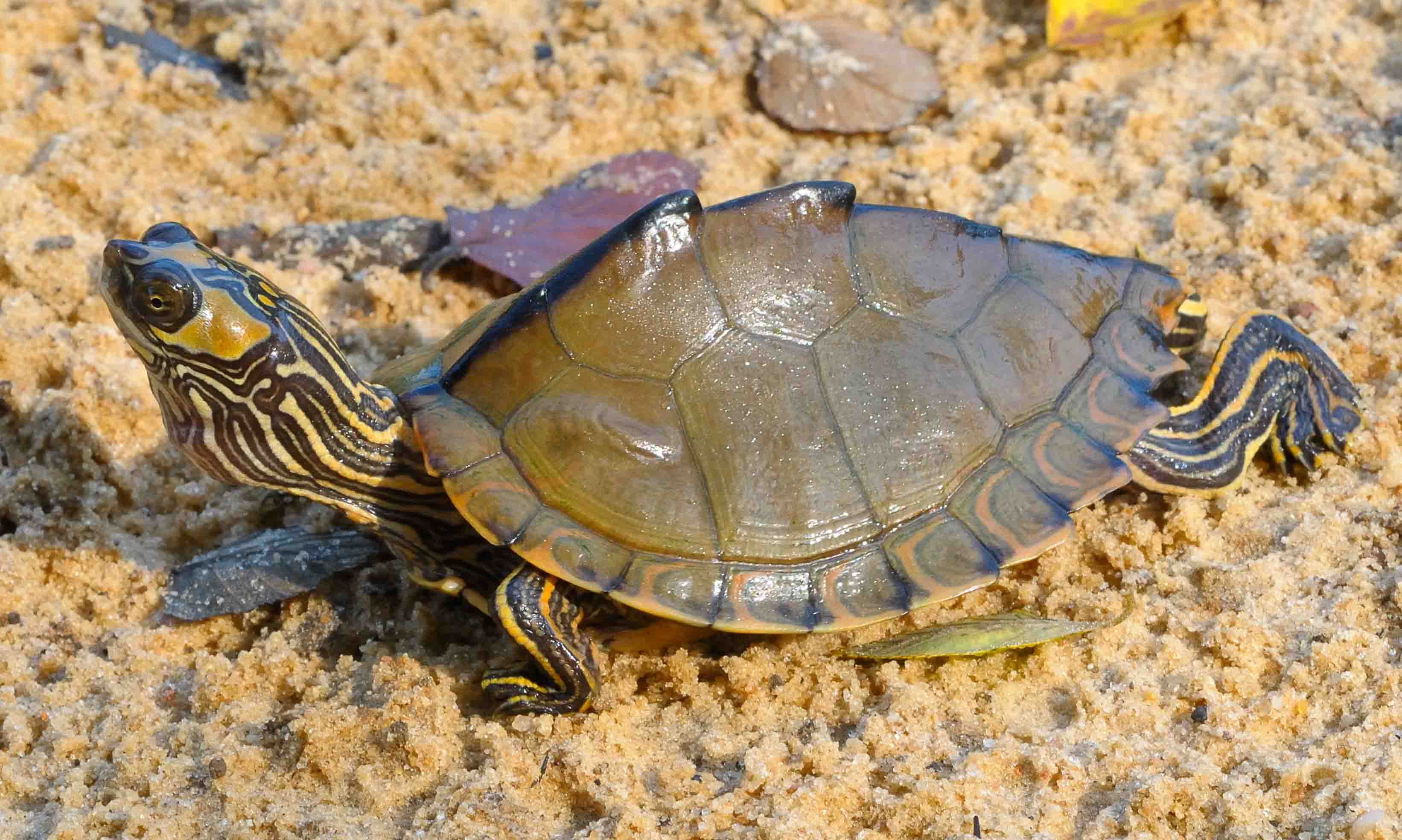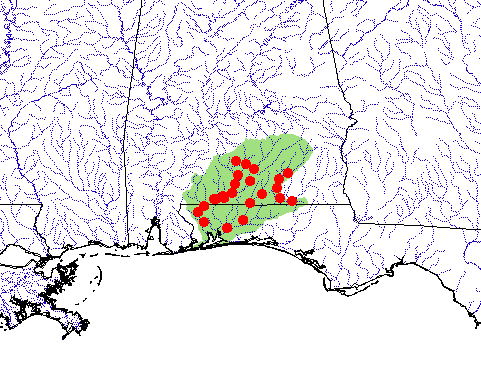Graptemys ernsti, 051
Graptemys ernsti Lovich and McCoy 1992 –
Escambia Map Turtle
Jeffrey E. Lovich1, James C. Godwin2, and C.J. McCoy3
1U.S. Geological Survey, Southwest Biological Science Center, 2255 North Gemini Drive
MS-9394, Flagstaff, Arizona 86001 USA [[email protected]];
2Alabama Natural Heritage Program, Environmental Institute, 1090 S. Donahue Drive,
Auburn University, Alabama 36849 USA [[email protected]];
3Deceased, formerly: Carnegie Museum of Natural History, 4400 Forbes Ave.,
Pittsburgh, Pennsylvania 15213 USA
Summary. – The Escambia Map Turtle, Graptemys ernsti (Family Emydidae) is a large freshwater species endemic to rivers of the Pensacola (Escambia) and Choctawhatchee Bay drainages of southeastern Alabama and western Florida, USA. It was previously recognized as part of the composite species Graptemys pulchra (see Lovich and McCoy 1992). Sexual dimorphism is pronounced, with adult females (carapace length [CL] to 285 mm) attaining more than twice the size of adult males (CL to 131 mm). Although the species is locally abundant, populations are threatened by habitat destruction coupled with declines in their prey base, commercial collecting, and vandalism. The current IUCN Red List status is Near Threatened, assessed as of 2010. With the recent discovery of a population in the Choctawhatchee River, genetic and morphological studies are needed to examine possible variation. Additionally, the presence of G. barbouri within the Choctawhatchee River presents a unique opportunity to study the ecological relations of sympatric megacephalic Graptemys.
Distribution. – USA. Restricted to the Escambia, Yellow, Conecuh, Shoal, Pea, and Choctawhatchee River systems emptying into Pensacola and Choctawhatchee Bays in Alabama and western Florida.
Synonymy. – Graptemys ernsti Lovich and McCoy 1992, Graptemys pulchra ernsti.
Subspecies. – None recognized.
Status. – IUCN 2011 Red List Status: Near Threatened (NT) (assessed 2010); CITES: Appendix III (as all Graptemys spp.; USA); US ESA: Not Listed.
Citation:
Lovich, J.E., Godwin, J.C., and McCoy, C.J. 2011. Graptemys ernsti Lovich and McCoy 1992 – Escambia Map Turtle. In: Rhodin, A.G.J., Pritchard, P.C.H., van Dijk, P.P., Saumure, R.A., Buhlmann, K.A., Iverson, J.B., and Mittermeier, R.A. (Eds.). Conservation Biology of Freshwater Turtles and Tortoises: A Compilation Project of the IUCN/SSC Tortoise and Freshwater Turtle Specialist Group. Chelonian Research Monographs No. 5, pp. 051.1–051.6, doi:10.3854/crm.5.051.ernsti.v1.2011, //iucn-tftsg.org/cbftt/.
(Adobe Acrobat 6.0 or later required)

Young mature male Graptemys ernsti from the Yellow River, Covington County, Alabama. The coloration of the dorsal and lateral head blotch is typical for the species and a portion of the nasal trident may be seen. Note the bulge on the #1 pleural, a character that G. ernsti often exhibits, especially in smaller specimens.
Photo by James C. Godwin.
Distribution:

Distribution of Graptemys ernsti in Alabama and Florida, USA. Red dots = museum and literature occurrence records of native populations based on Iverson (1992) as part of G. pulchra sensu lato, plus more recent and authors’ data; green shading = projected distribution based on GIS-defined hydrologic unit compartments (HUCs) constructed around verified localities and then adding HUCs that connect known point localities in the same watershed or physiographic region, and similar habitats and elevations as verified HUCs (Buhlmann et al. 2009), and adjusted based on authors’ data.








